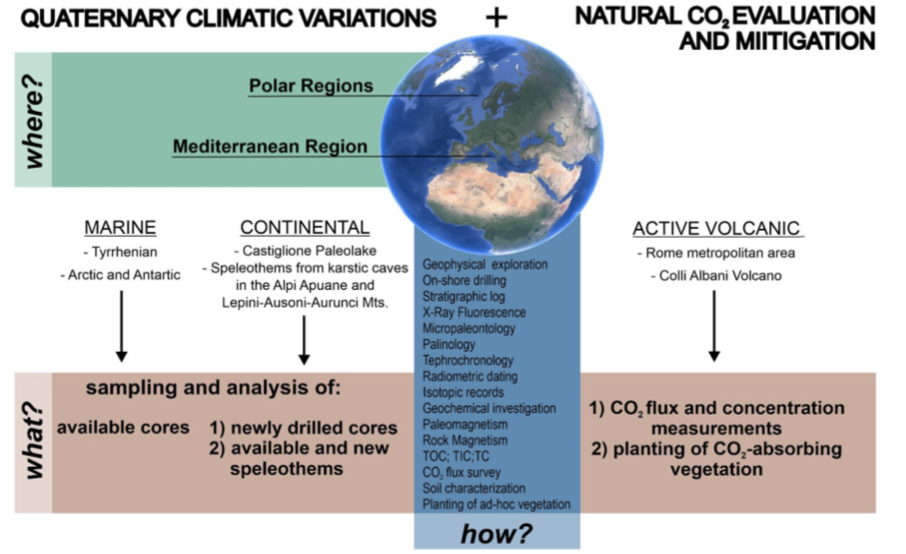AMUSED is the acronym for A MUltidisciplinary Study of past global climatE changes from continental and marine archives in the MeDiterranean region
The overall objectives of the AMUSED project are: to improve the knowledge about paleoenvironmental and paleoclimatic variations that occurred in the central Mediterranean region during the late Quaternary, and to estimate the natural soil CO2 emission in the Colli Albani volcanic area (Central Italy), including the city of Rome, to prevent and mitigate its impact on people and animals. Specific objectives will be pursued to:
• assess the variability of integrated paleoclimate multi-proxies from terrestrial and marine environments, during the last 280 kyrs with a focus on the entire Holocene (WP2);
• obtain a robust age-model and to synchronize and correlate the studied sedimentary archives (WP2);
• evaluate the connections between high and medium latitude paleoclimatic changes and possible interhemispheric time lags/leads difference in the two hemispheres (WP2);
• investigate the potential relationship between specific volcanic eruptions and past climate variations (WP3);
• estimate the natural soil CO2 emission in the Colli Albani volcanic area (Central Italy), including the city of Rome(WP3).
• mitigate the environmental effects of natural CO2 emissions by planting a particular vegetation with high CO2 adsorbing capacity in an anomalous gas releasing zone (WP3).
An extensive network including Italian, foreign universities and research institutes have been created in order to fulfill the aims.
We will investigate lacustrine, speleothem and marine successions aiming at comparing and evaluating, within a narrow geographical range, the expressions of the climate variability in three different sub-systems at different temporal scales and resolution.
We selected: (i) the Castiglione maar (central Italy); (ii) Speleothems that will be acquired from selected caves of the Lepini-Ausoni-Aurunci area (central Italy) and (iii) two marine cores recovered in the Tyrrhenian Sea during the NextData2016 cruise.
High-resolution and geochronologically well-constrained terrestrial and marine multi-proxy data will be acquired through physical, bio-geochemical and paleontological multi-proxy analysis: lithofacies characterization, X-ray Fluorescence (XRF) core scanning, paleomagnetism and rock magnetism, pollens, ostracods, foraminifera, calcareous nannofossils, isotopic analyses (δ18O, δ13C, δ11B, 87Sr/86Sr, 143Nd/144Nd), carbon content (TC/TIC/TOC), absolute radiometric dating (14C, 40Ar-39Ar, U/Th; 210Pb,137Cs), tephrostratigraphy and tephrochronology.
The estimation and reduction of the natural soil CO2 emission in the Colli Albani area (Central Italy) and Rome city area will be obtained by environmental geochemistry studies.


